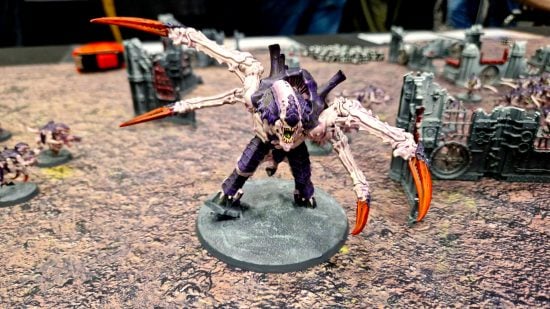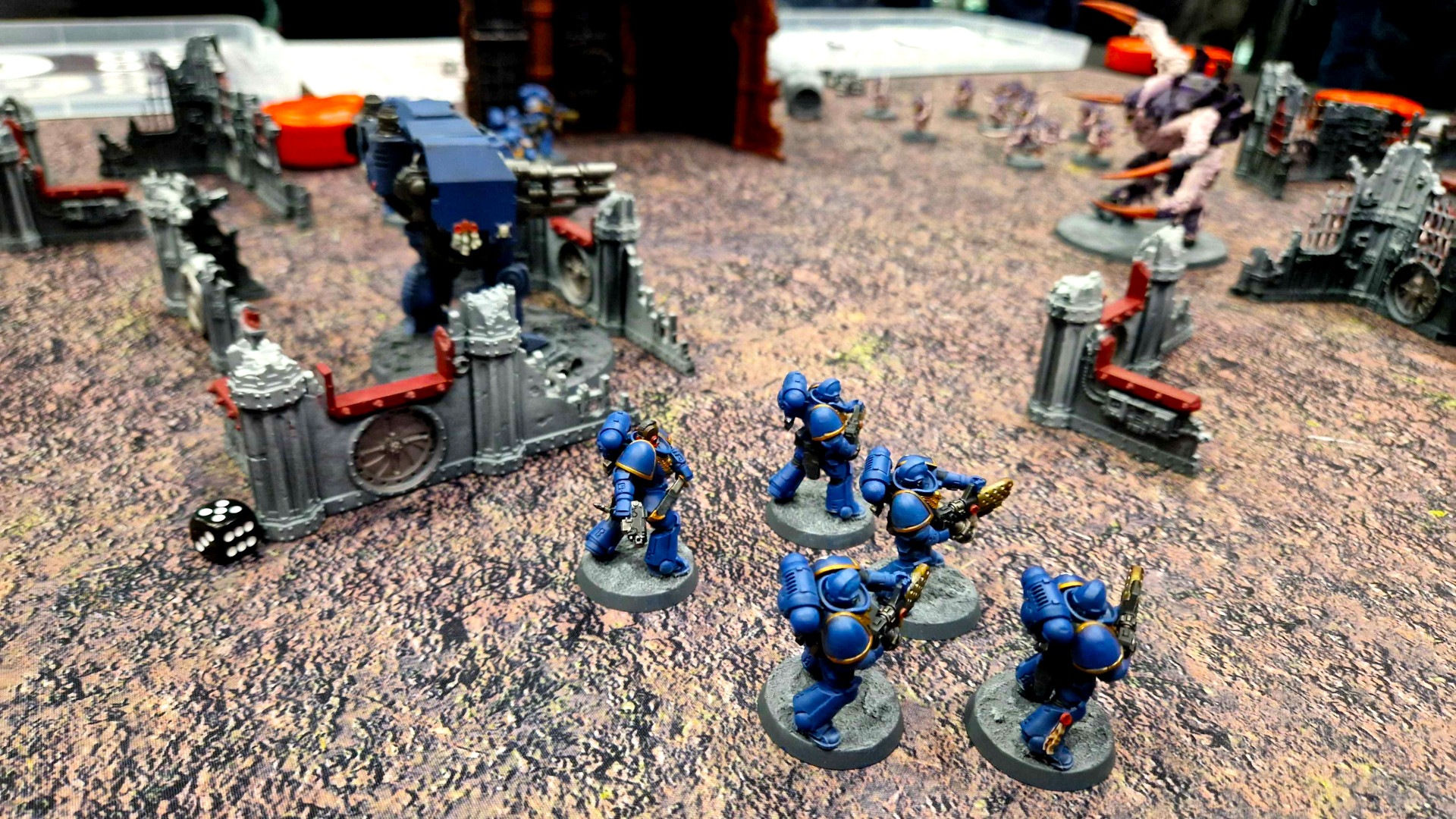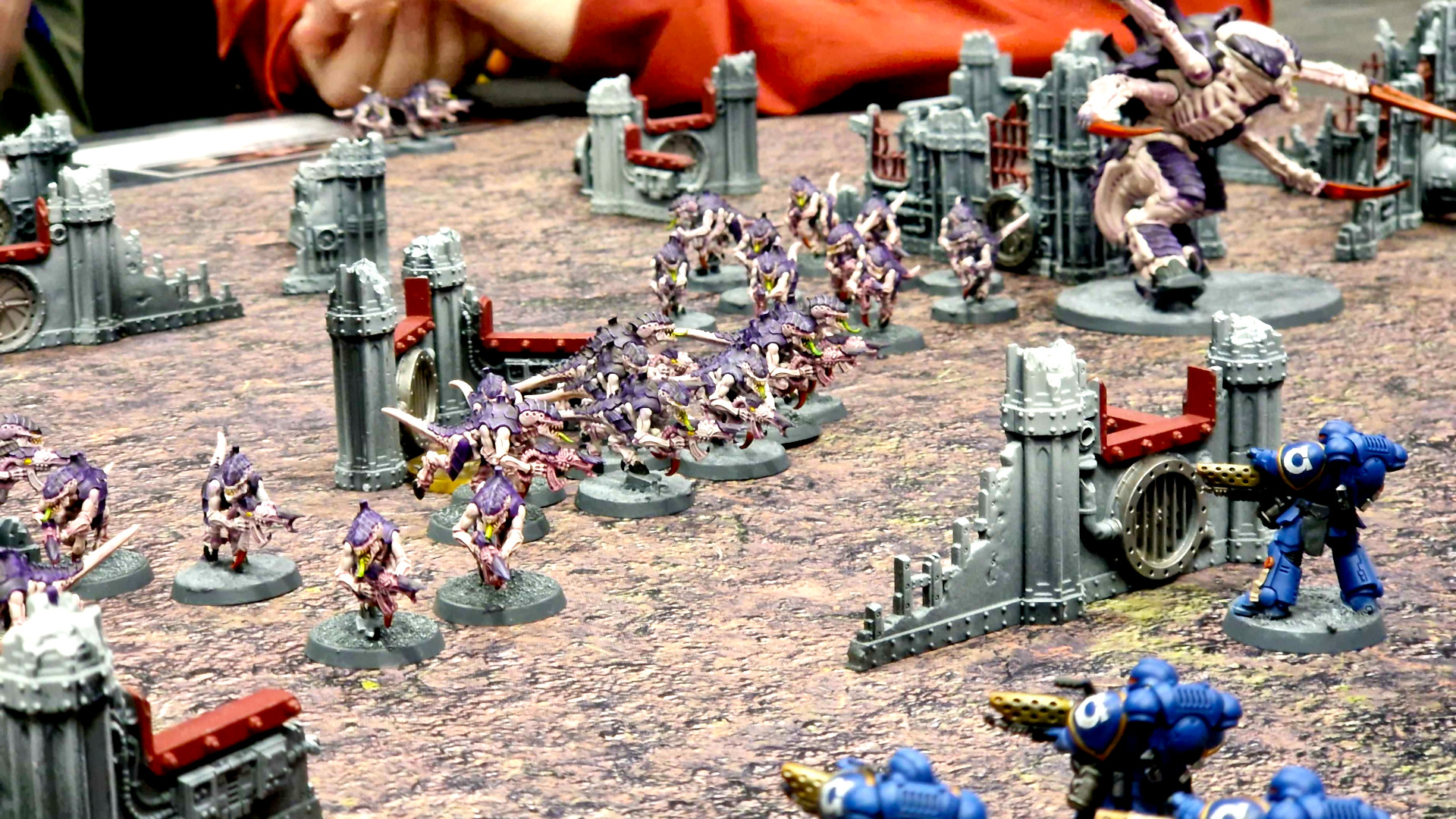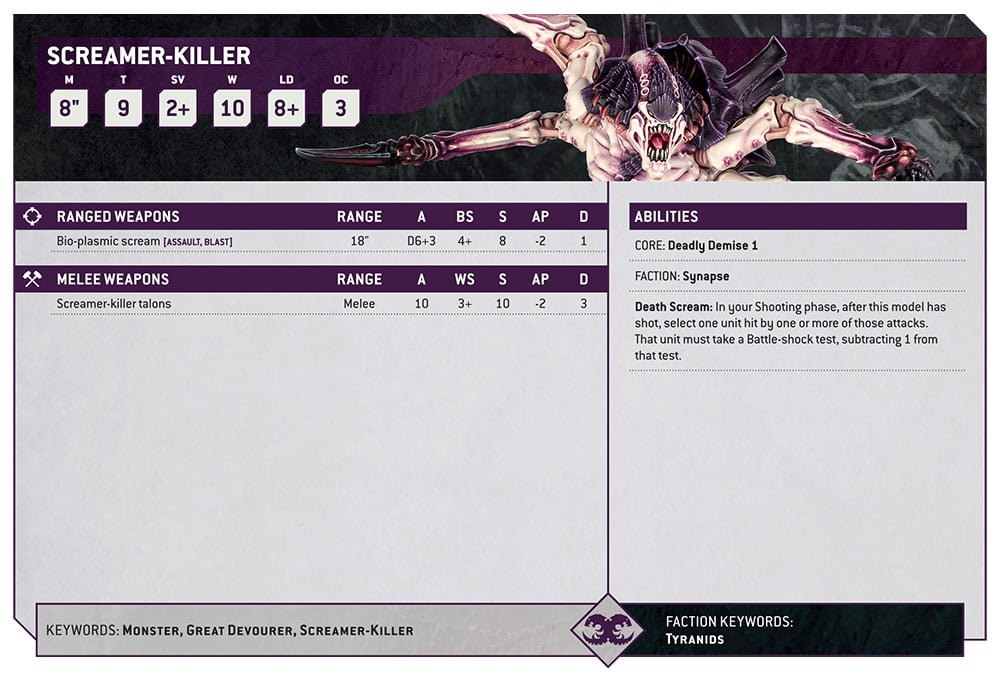Braving a queue of hundreds of pious Warhammer devotees, Wargamer had the pleasure of playing a short Warhammer 40k 10th edition gameplay demo at Warhammer Fest 2023. It was a fast and frantic affair, and Inquisitorial acolytes mind-wiped our scrivener servitor, but we made it out with some critical intel about Warhammer 40k 10th edition. Here are some shiny new rules we came across that’ll have an impact on the new edition.
Bear in mind that these were noted down quickly mid-game, based on the pronouncements of our master of ceremonies, Games Workshop’s Nick Bayton – who himself gave the disclaimer that there’s always the chance he’s remembered something a bit wrong.
Also, make sure you also check out our coverage of the Warhammer 40k 10th Edition starter set Leviathan, and the newly revealed Age of Sigmar Warcry Nightmare Quest box (it’s got a pyramid in).
For now, though, we’ve got some important 40k changes to share…
10th Edition Blast
In 10th Edition Blast weapons will work a little differently: they’ll get to roll one additional attack dice per five models in the target unit. So, if you’re firing at a 30-model unit with a Blast weapon that fires d6 shots, you’ll get d6+6 shots total.
In 9th Edition, Blast meant that, if you fired a weapon with a variable number of shots at a large target unit, you’d be guaranteed a certain number of shots. A target unit of 6-10 models meant you’d get at least 3 shots from each d6 roll, while a target unit of 11 or more models meant you didn’t need to roll; you’d just get automatic results of 6.
10th Edition Overwatch
10th Edition Overwatch has had a major change-around. It’s still a Stratagem; it still costs 1CP; and it’s still limited to once per turn… but you can use it even when it isn’t the charge phase; if an enemy unit ends its move in range of you, it’s fair game. Fans of Warhammer 40k 2nd edition might feel at home!
Remember, though, in 10th you’ll only get 1CP each Command Phase, so any Overwatch shooting will limit your Stratagem options next turn.
10th Edition Objective Markers
In 10th, models can’t stand on objective markers any more – no model can end its move covering any part of an objective marker.
Nick Bayton tells us this is aimed at making sure all players can clearly see all the objective markers on the table at any time.
10th Edition Fight Phase rules
We learnt a few useful titbits about the 10th Edition Fight Phase (while our Infernus Squad marines were getting pulverised by Screamer Killers).
Engagement range
The rules for Piling In at the beginning of the Fight phase remain the same as 9th Edition, but the rules governing who can fight afterwards have changed a bit. Melee engagement is pretty straightforward: a model that is in base contact with an enemy figure can fight it, as can any models that are in base contact with them.
Consolidate moves
Units that aren’t engaged with the enemy at the end of the Fight Phase can still make a three inch consolidate move, but only if it puts them in control of an objective, or in engagement range of an enemy unit.
10th Edition Desperate Escape tests
We’ve also learned how the previously mentioned “Desperate Escape” tests will work, for battle-shocked units that fall back from combat.
As we know, 10th Edition Battleshock tests are made on 2d6: you need to equal or beat the unit’s leadership stat or become Battle-shocked for the round. If your unit is Battle-shocked, its OC (objective control) drops to zero, meaning it can’t take or hold any objectives – and, if it Falls Back from combat, it must take a Desperate Escape test.
What’s that, you ask? You’ll roll a die for each model falling back, and, for each 1 or 2 the model will flee (i.e. immediately leave play). So, as we suspected, that part works similarly to the 9th Edition Combat Attrition tests.
Screamer-Killers force Battle-shock tests
We know that units take a Battle-shock test when they’re below 50% strength, or under certain other conditions – and one of those is being blasted by a Screamer-Killer’s bioplasma.
The Screamer-Killer’s bioplasma blast attacks triggers an automatic Battle-shock test on any unit it hits, at a -1 penalty. That’s right – this weapon is so distressing it doesn’t even need to wound the target to force them to make the check.
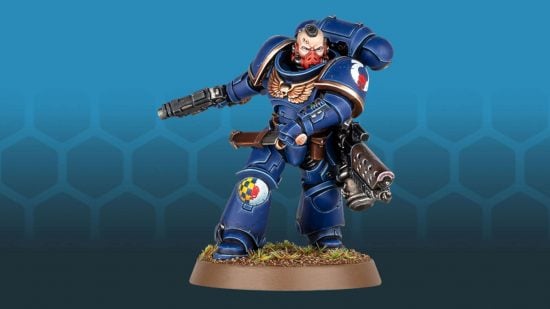
10th Edition Space Marine Sergeants
And, speaking of combat, as a last little change: Space Marines now have a flat three attacks – no more Shock Assault – whether they’re a line trooper or a sergeant. Sergeants do still get different wargear choices, though. Privileges of rank.
Need an army refresher before diving into 10th Edition? Check out our guide to all the Warhammer 40k factions. Or, if you’re already up to the minute, make double sure by checking our running guide to the new 10th edition Warhammer 40k abilities (they’re the new universal special rules).
